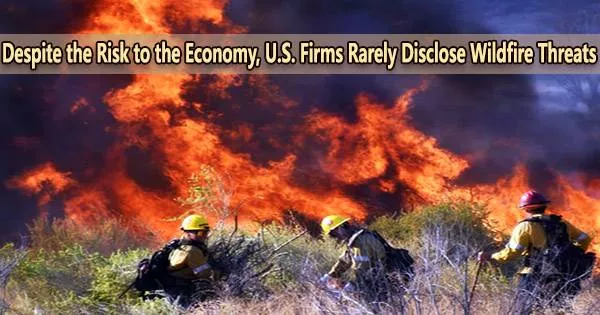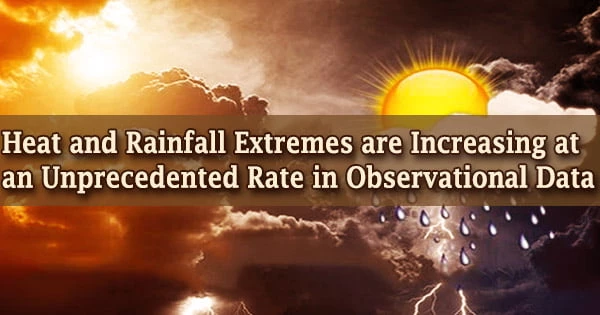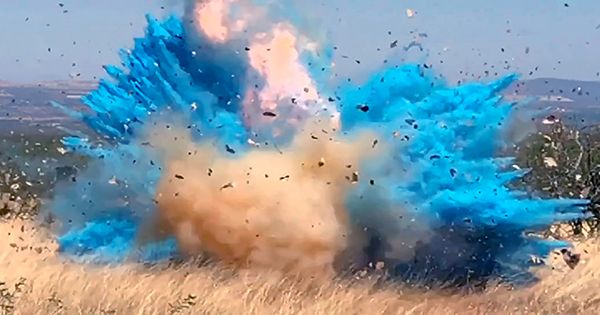In the United States, particularly in the Western states, wildfires pose an increasingly serious risk to entire towns, frequently consuming homes, businesses, and lives. As wildfires spread through an area, the economy as a whole is also impacted, which lowers the value of U.S. companies to investors when companies sustain physical damage, create or experience supply chain problems, or lose personnel.
Yet U.S. firms rarely report their wildfire risks in required federal filings and instead bury such risks in nonspecific risk disclosures, according to new research led by the University of California, Davis.
The study was published this month in the Journal of Business Finance & Accounting.
According to the report, just 6.1% of companies with wildfires in their headquarters county include information on wildfires in their necessary disclosures and exhibits submitted to the Securities and Exchange Commission.
All publicly traded firms are required to file annual reports called 10-Ks, which contain the disclosures and exhibits. These mandated disclosures are essential to business appraisals and can provide information about the company’s present and future financial health.
“Despite a growing awareness of the strategic importance of climate change, firm-level disclosures of extreme weather and climate-related risks and events remain the exception rather than the norm,” said Paul Griffin, professor at the UC Davis Graduate School of Management and lead author of the paper. He is an authority on accounting and financial information and disclosure, particularly in relation to extreme weather and climate change.
“Disclosure is a sign that the firm is taking these events seriously and will take action itself to mitigate the risk,” Griffin explained. “Disclosure leads to real action.” And companies that disclose risks can be viewed as less risky to investors, he said.
Despite a growing awareness of the strategic importance of climate change, firm-level disclosures of extreme weather and climate-related risks and events remain the exception rather than the norm.
Professor Paul Griffin
The researchers examined more than 80,000 10-K files from the years 1996 to 2018 to see if any disclosures about wildfire incidents that had place during that time period were included in those reports.
Griffin and his coauthors found it encouraging that they could find companies in their area that were sensitive to wildfires, but they were extremely dismayed by the fact that so few companies reported these risks and took steps to start mitigating them.
Companies should, for instance, think about relocating their activities to places with lower fire risks, upgrade their current structures and machinery, create fire safety training programs for staff members, or create other mitigation techniques.
Wildfire days in firm’s county
Researchers discovered that a company’s decision to disclose wildfire risk is significantly influenced by the number of wildfire days in the county where its headquarters are located. Only businesses who have already experienced wildfire damage in their counties, primarily those in the banking and utility sectors, report these risks. One example was PG&E, a public utility in California, which has been held responsible for wildfires due to equipment failure.
Yet, as was the case with many disclosure statements the researchers analyzed, PG&E only acknowledged their potential risk to wildfire after their risks and liability were made public. Griffin said even when already exposed, they disclosed very little about their future potential risks, which is also necessary in a situation when there is ongoing risk.
The most disclosure-sensitive companies, according to researchers, are those whose past operations were likely affected by wildfire occurrences, while the most disclosure-insensitive companies are those whose 10-K disclosures primarily address risk concerns that would arise un the future. According to them, the latter companies are also more likely to define their wildfire risk using sparse, imprecise wording.
Researchers discovered that the sensitivity of wildfire disclosure rose around and after 2010, which is consistent with SEC instructions pressuring businesses to take extreme weather into account as a significant risk factor.
Paper co-authors include Yijing Jiang and Estelle Sun, both of Boston University Questrom School of Business.
















